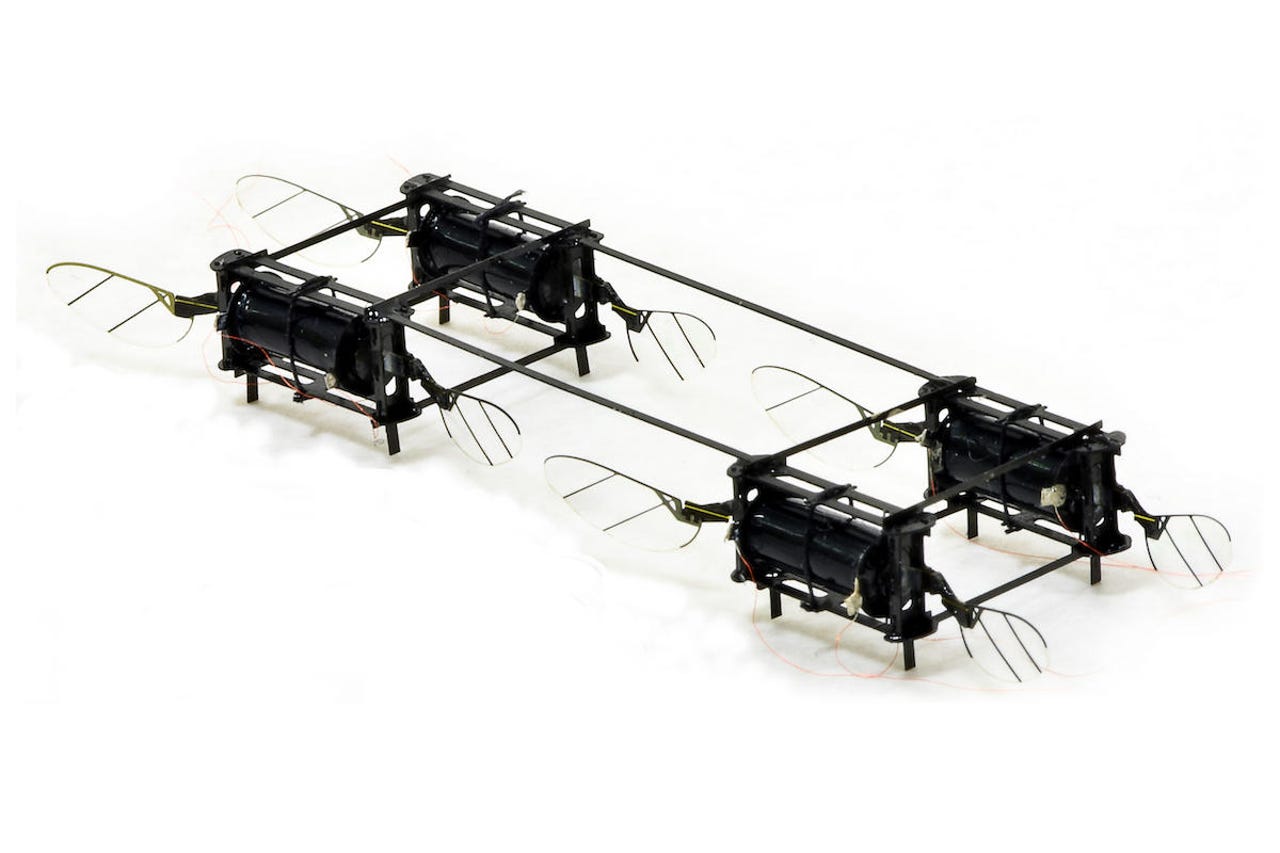MIT's tiny insect drone looks like a cassette tape with wings but can bounce back from mid-air collisions


MIT researchers have developed a tiny drone with soft actuators that can flap nearly 500 times per second, allowing it to be more resilient to mid-flight bumps and nimble enough to fly like a bee.
MIT Assistant Professor Kevin Yufeng Chen led the project to build an insect-like drone that uses soft actuators rather than hard, fragile actuators.
"The soft actuators are made of thin rubber cylinders coated in carbon nanotubes," explains MIT.
"When voltage is applied to the carbon nanotubes, they produce an electrostatic force that squeezes and elongates the rubber cylinder. Repeated elongation and contraction causes the drone's wings to beat fast."
This actuator is different to the ones used in bee-inspired RoboBee drone that Harvard University showed off in 2018, which used a piezoelectric ceramic or hard actuators. These contained strips of ceramic that expand and contract when an electric field is applied.
"Although these existing systems can achieve a high lift-to-weight ratio, they have not demonstrated insect-like maneuvers such as somersault or rapid collision recovery," Chen and co-authors MIT PhD student Zhijian Ren, Harvard University PhD student Siyi Xu, and City University of Hong Kong roboticist Pakpong Chirarattananon, say in a new paper published in this month's IEEE Transactions on Robotics journal.
The MIT researchers present a 665 mg aerial robot that is "powered by novel dielectric elastomer actuators (DEA)."
MIT produced a video demonstrating the drone's ability to take a knock mid-flight and recover. The drone is currently tethered to a wired power source due to the actuators requiring high operating voltage.
Chen sees potential applications for this type of drone could include pollinating crops or inspecting machinery in cramped spaces, such as inspecting the inside of a turbine engine. He also see its potential for assisting search-and-rescue missions.
"If we look at most drones today, they're usually quite big," says Chen. "Most of their applications involve flying outdoors. The question is: Can you create insect-scale robots that can move around in very complex, cluttered spaces?"
While the current prototype looks like a cassette tape with four sets of flapping wings, Chen is also working new prototype that looks like a dragonfly.
Farrell Helbling, an assistant professor of electrical and computer engineering at Cornell University, who worked on Harvard's RoboBee, said the the next advance will be to untether the drone from a wired power source.
"I'm excited to see how the authors will reduce operating voltage [of the actuators] so that they may one day be able to achieve untethered flight in real-world environments," said Helbling.